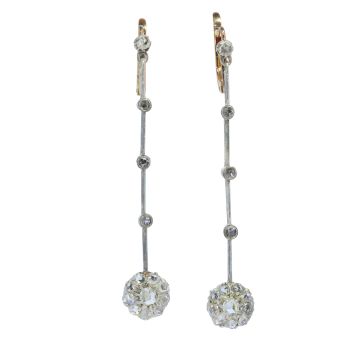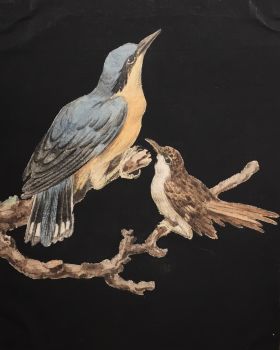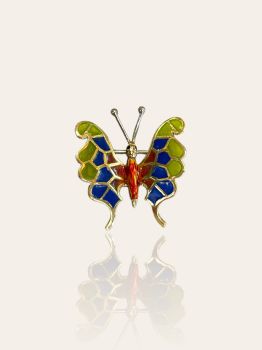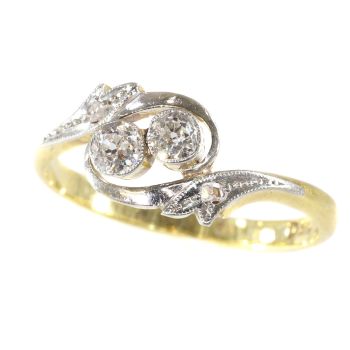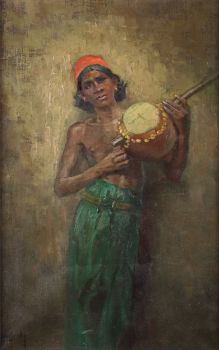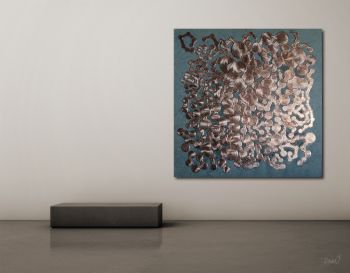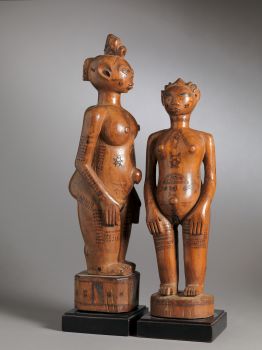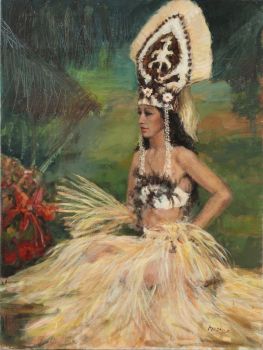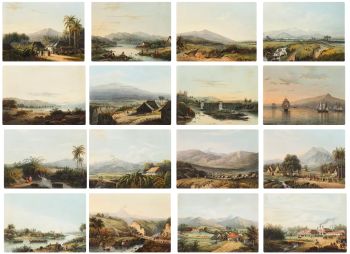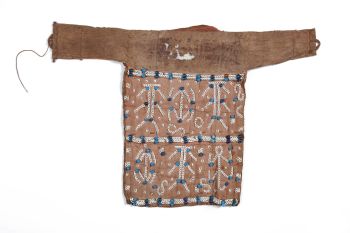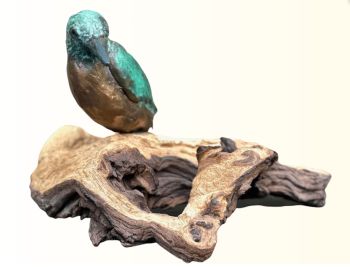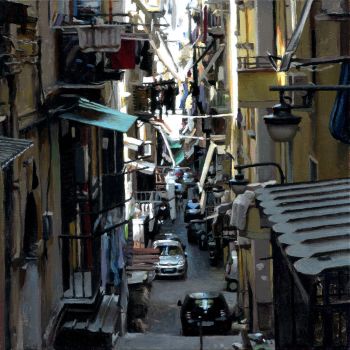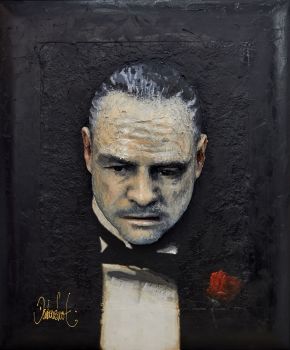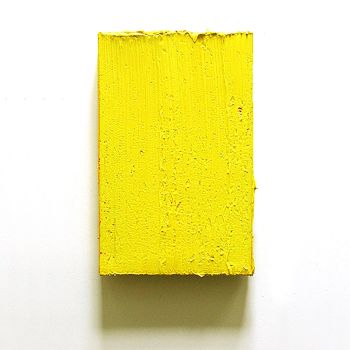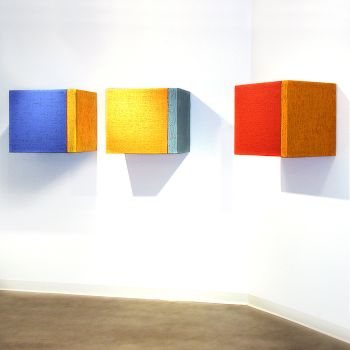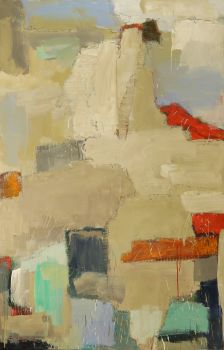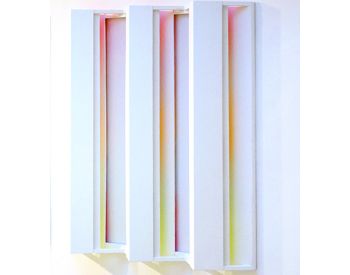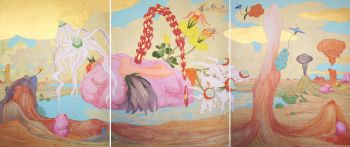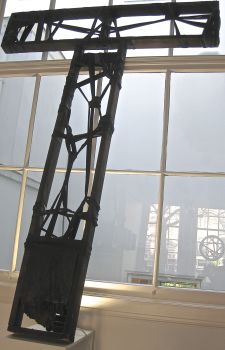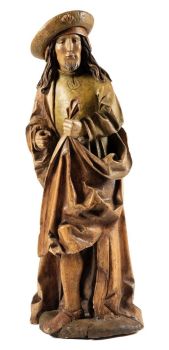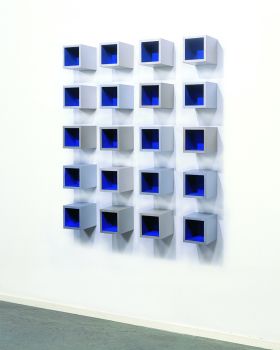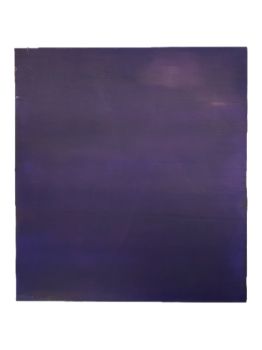A pair of Javanese wooden polychrome painted wall panels, c. 1900 1900
Artista Sconosciuto
Legna
71 ⨯ 49 cm
ConditionGood
€ 1.200
Menken Works of Art
- A proposito di opere d'arteAn exquisite pair of carved wooden polychrome relief hand-painted panels in original frames.
Java (Indonesia), late 19th / early 20th century.
The figure on the left panel of the first picture representing Brajadenta. With text at the bottom: 'R.Soeratinin Aro'.
The figure on the right panel of the first picture representing wayang figure Bratasena, the young Bima. With text at the bottom: 'R.(=Raden) Brontoseno. Soerabaja', followed by a date.
A fine example of Javanese folk art
In some parts of Java, wooden plaques like these were placed on the wall around the entrance of the house, to protect the residents from evil spirits.
Dimensions with frames:
Length 71 cm, width 49,5 cm.
Dimensions without frames:
Length 56 cm, width 34,5 cm
Condition:
In a good old condition with some wear - see pictures.
Provenance:
From the collection of Dr. Hedi Hinzler, Leiden, the Netherlands.
Ref:
Soebadio, Haryati - Pusaka Indonesische kunstschatten, p. 173.
Worldwide registered and insured shipping.
Take a look at our other listings for more Asian art, antiques, design, etc.
Inv. No: A00281
-
The story behind the two Wayang figures:
Bratasena:
This puppet represents the character of the Bima also known as Bratasena (Bhima) in the Hindu epic Mahabharata which is performed in the Javanese wayang kulit, or leather shadow puppet theatre tradition. Bima is one of the five Pandava brothers and is recognised by his large thumbnail, that he used to attack his enemies.
Brajadenta:
Brajadenta is the third son of Prabu Arimbaka (Kala Tremboko), the giant king of the Pringgandani state with Dewi Hadimba.
Brajadenta has a stubborn character, wants to win alone, is brave and wants to always follow his heart. He was very powerful, because of that his older brother, Dewi Arimbi, appointed him as the deputy king to hold the reigns of government for the Pringgandani state as long as Dewi Arimbi accompanied her husband Werkudara to live in Jadipati.
At the end of his story, it is told that because he disagreed with the appointment of Gatotkaca, the son of Dewi Arimbi and Werkudara as king of Pringgandani, Brajadenta, assisted by his three younger brothers, Brajamusti, Brajalamatan and Brajawikalpa, rebelled because he wanted to absolutely control the country of Pringgandani.
Gatotkaca crushed his rebellion with the deaths of Brajalamatan and Brajawikalpa. Brajadenta and Brajamusti managed to escape and take refuge in their nephew Prabu Arimbaji, the son of the late Prabu Arimba who had become king in the country of Gowasiluman in the Tunggarana forest. With the help of Bathari Durga, Brajadenta entered Pringgandini's country again to kill Gatotkaca.
His efforts again failed. Brajadenta finally died in the battle against Gatotkaca.
His spirit incarnated into an enchantment / magic and entered / merged into Gatotkaca's teeth. Since then Gatotkaca has supernatural powers; whoever gets bitten by it will surely perish. - A proposito di opere artista
Può succedere che un artista o un creatore sia sconosciuto.
Alcune opere non sono determinate da chi sono state realizzate o sono state realizzate da (un gruppo di) artigiani. Esempi sono statue dell'antichità, mobili, specchi o firme non chiare o leggibili ma anche alcune opere non sono affatto firmate.
Inoltre puoi trovare la seguente descrizione:
•"Attribuito a …." A loro avviso probabilmente opera dell'artista, almeno in parte
•“Studio di ….” o “Officina di” A loro avviso un'opera eseguita nello studio o nella bottega dell'artista, eventualmente sotto la sua supervisione
•“Cerchio di…” A loro avviso un'opera del periodo dell'artista che mostra la sua influenza, strettamente legata all'artista ma non necessariamente al suo allievo
•"Stile di..." o "Seguace di..." A loro avviso un'opera eseguita nello stile dell'artista ma non necessariamente da un allievo; può essere contemporaneo o quasi contemporaneo
•“Modalità di…” A loro avviso un'opera nello stile dell'artista ma di epoca successiva
•"Dopo …." A loro avviso una copia (di qualsiasi data) di un'opera dell'artista
•“Firmato…”, “Datato…” o “Iscritto” A loro avviso l'opera è stata firmata/datata/inscritta dall'artista. L'aggiunta di un punto interrogativo indica un elemento di dubbio
•"Con firma....", "Con data...", "Con iscrizione..." o “Riporta firma/data/iscrizione” a loro avviso la firma/data/iscrizione è stata aggiunta da qualcuno diverso dall'artista
Sei interessato ad acquistare questa opera d'arte?
Artwork details
Related artworks
- 1 - 4 / 12
HUGO VILFRED VON PEDERSEN
Gadesanger fra Singapore (Musician from Singapore)1870 - 1959
Prezzo su richiestaZebregs & Röell - Fine Art - Antiques
Artista Sconosciuto
Chinese carnelian agate vase or brush washer, 18th/19th century, Qing dynasty1720 - 1820
Prezzo su richiestaMenken Works of Art
Artista Sconosciuto
A blue and white Romance of the Three Kingdoms charger, Kangxi period (1661-1722)1661 - 1722
Prezzo su richiestaMenken Works of Art
Artista Sconosciuto
A Chinese porcelain blue and white 'Mantou Xin' bowl, Kangxi period (1661-1722)1700 - 1720
Prezzo su richiestaMenken Works of Art
1 - 4 / 11Artista Sconosciuto
MATERNITY FIGURE, FANG-MABEA, CAMEROON.PROVENANCE R.CAILLOIS-P.RATTON.1920 - 1930
Prezzo su richiestaSpectandum Gallery
Artista Sconosciuto
Couple Wooden Ancestors Sculptures with Scarifications, Zela People, DRC. 1920 - 1930
Prezzo su richiestaSpectandum Gallery
1 - 3 / 3Thea G.F. Eschauzier
Ritratto di una ragazza giavanese1931
Prezzo su richiestaZebregs & Röell - Fine Art - Antiques
Thea G.F. Eschauzier
Ritratto di una ragazza giavanese1931
Prezzo su richiestaZebregs & Röell - Fine Art - Antiques
Abraham Salm
Twenty-four chromolithographs of Java after A. Salm”1801 - 1876
Prezzo su richiestaZebregs & Röell - Fine Art - Antiques
Theo Meier
“Una donna balinese con offerte”1936
Prezzo su richiestaZebregs & Röell - Fine Art - Antiques
Artista Sconosciuto
A Dutch colonial Indonesian betel box with gold mounts1750 - 1800
Prezzo su richiestaZebregs & Röell - Fine Art - Antiques
1 - 4 / 11Rene Rietmeyer
"Portrait of Alessandra" 20182018
Prezzo su richiestaEuropean Cultural Centre Collection
Artista Sconosciuto
Couple Wooden Ancestors Sculptures with Scarifications, Zela People, DRC. 1920 - 1930
Prezzo su richiestaSpectandum Gallery
Rene Rietmeyer
"Installation big boxes Miami-Beach 2006"2006
Prezzo su richiestaEuropean Cultural Centre Collection
1 - 4 / 24Artista Sconosciuto
A Chinese porcelain blue and white 'Mantou Xin' bowl, Kangxi period (1661-1722)1700 - 1720
Prezzo su richiestaMenken Works of Art
Artista Sconosciuto
A blue and white Romance of the Three Kingdoms charger, Kangxi period (1661-1722)1661 - 1722
Prezzo su richiestaMenken Works of Art
Artista Sconosciuto
A white jade ‘Lotus Seedpod and Bug’ carving, Qing dynasty, 18th century18th century
Prezzo su richiestaMenken Works of Art
Artista Sconosciuto
Chinese carnelian agate vase or brush washer, 18th/19th century, Qing dynasty1720 - 1820
Prezzo su richiestaMenken Works of Art
Artista Sconosciuto
Two large Chinese carved wooden architectural wall panels, Qing dynasty, 19th century19th century
Prezzo su richiestaMenken Works of Art
Artista Sconosciuto
Chinese gilt bronze censer, Xuande mark, 18th century, Qing dynasty18th century
Prezzo su richiestaMenken Works of Art
1 - 4 / 9






